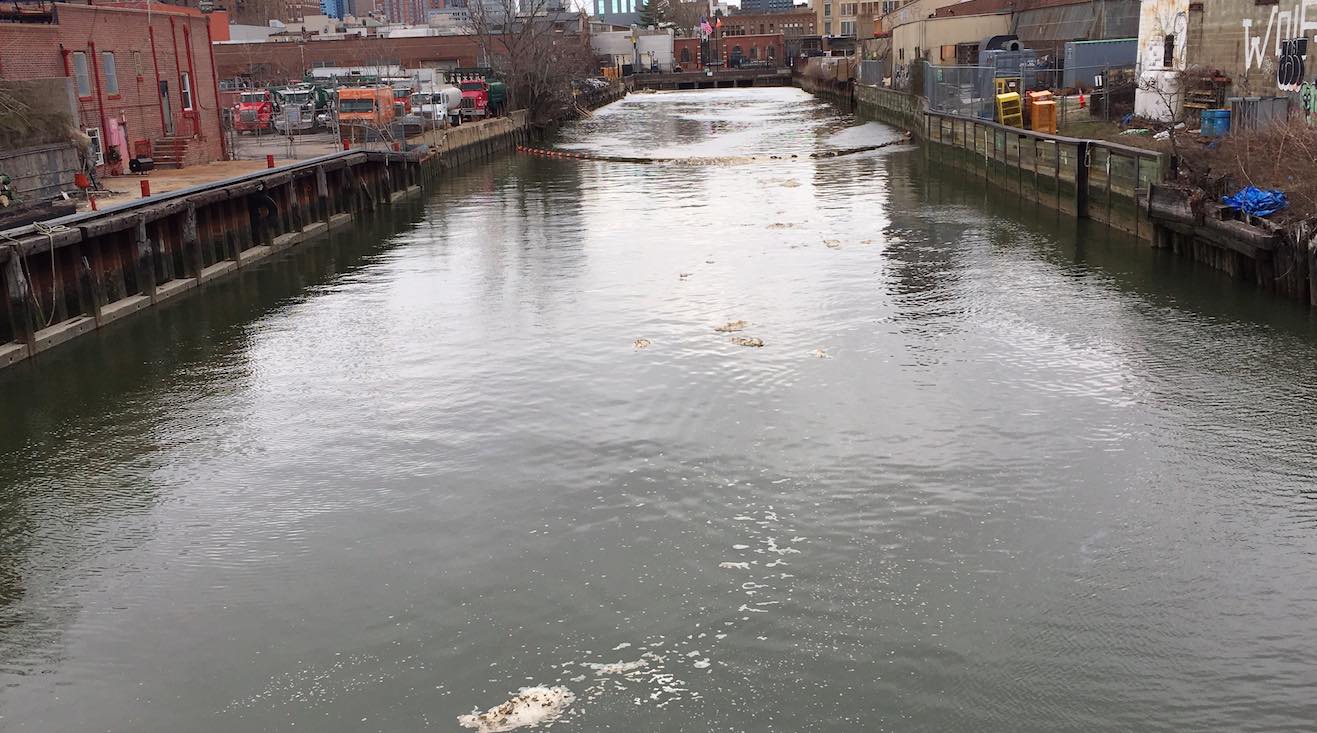Report Finds Private Homes And Businesses May Be Contributing To Illegal Dumping
GOWANUS/GREENPOINT/CONEY ISLAND – Some homeowners and business owners in NYC may be unwittingly contributing to polluting the city’s waterways, according to a recent City Limits report.

While the Beach Haven Apartments were recently fined $400,000 for dumping raw sewage into Coney Island Creek, they are not alone. Illegal connections that send sewage into waterways have been discovered on private homes and businesses throughout the city, according to the report.
Some buidlings in Brooklyn are equipped with sewage pipes that are connected to storm drains that flow into the Gowanus Canal, Newtown Creek, and Coney Island Creek—instead of to a sewer main that leads to a treatment plant. Some businesses may also be flushing toxic materials or industrial fluids into storm drains that flow into city waters.
“None of us can be 100 percent sure that we’re not contributing to [the problem],” Jarrett Murphy, the author of the City Limits report told WNYC, “because these pipes tend to be multiple decades old…finding where it goes to is a real detective story.”
NYC does monitor its waterways to track illegal dumping and forces polluting property owners to reroute their pipes, however the city’s intricate system of pipes can make it difficult to find the exact buildings that are polluting.
“Keep in mind that the city is massively huge. And really significantly old. So I don’t think that anybody really has a true handle on the actual scope of the problem of illegal discharge connections for sewage problems,” Sean Dixon, a Senior Attorney for Riverkeeper, a clean water advocacy group, told City Limits.
“You might have had your grandfather buy a building in the 1920s and it still has an illegal connection you’d have no way of knowing about,” Dixon added. “This is such an old and overbuilt city that it’s quite possible that even the best intentioned facilities that think their waste water is going to the right place—it’s not.”
The U.S. Environmental Protection Agency (EPA) named Newtown Creek a Superfund site in 2010. Members of the Newtown Creek Alliance take regular boating trips on the creek to take water samples and search for illicit connections and illegal dumping along the coastline. Water running out of a storm pipe on a dry day can be a tell-tale sign of improper dumping. “Dry discharges” can indicate an illicit connection since “a storm drain or sewage overflow pipe should only be active when it’s raining,” according to the article.
In 2014, the EPA reported “more than 300 private and municipal outfalls have been identified along Newtown Creek and its tributaries, some of which may be abandoned and no longer active.”
An EPA survey of the Gowanus Canal, also deemed a Superfund site in 2010, discovered 250 outfalls along the coastline. Some pipes were “actively discharging during dry weather.”
Along with the Beach Haven Apartments, ten businesses and two homes were also found dumping into Coney Island Creek and ordered to make repairs, though there are likely additional culprits, the article states. Stormwater runoff from the Belt Parkway as well as from the MTA’s Coney Island rail yards also contribute to polluting the creek.
The Department of Environmental Protection (DEP) annually surveys about 60 miles of NYC’s 600 miles of shoreline searching for potential problems. Members of the public can also look for potential polluters and call 311 with any findings. “There’s always eyes out there,” DEP deputy commissioner Pamela Elardo says.
“If you see something, say something,” Murphy told WNYC. “If you notice a pipe, and it’s not raining but something’s coming out of it, whether it looks clean or not, call it in” to 311 or the DEP.
Go to citylimits.org to read Murphy’s full report.




